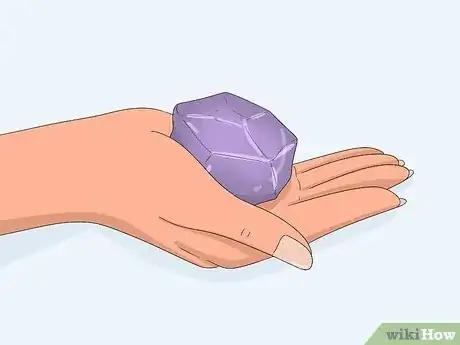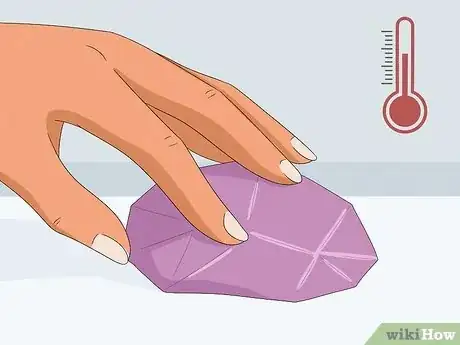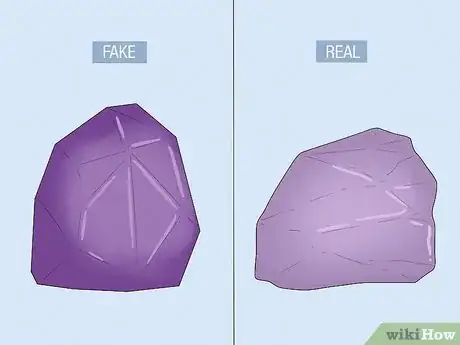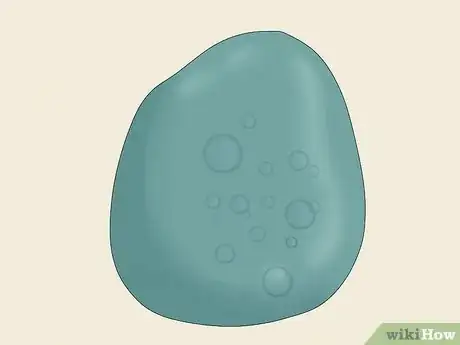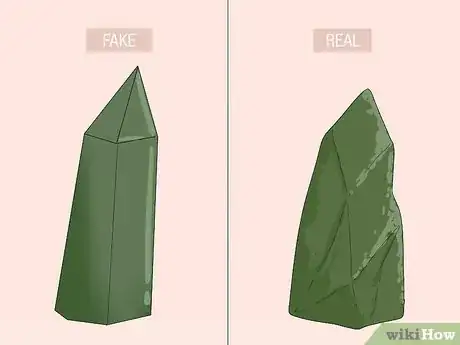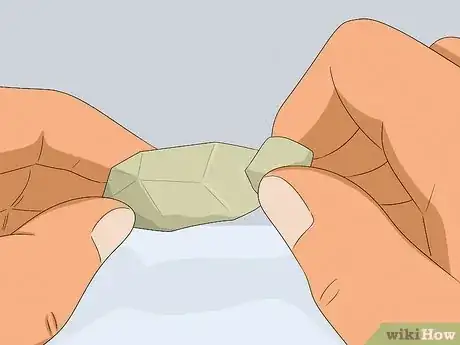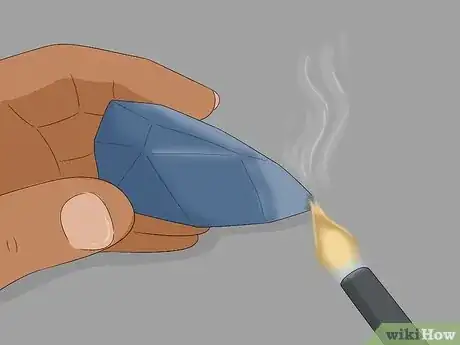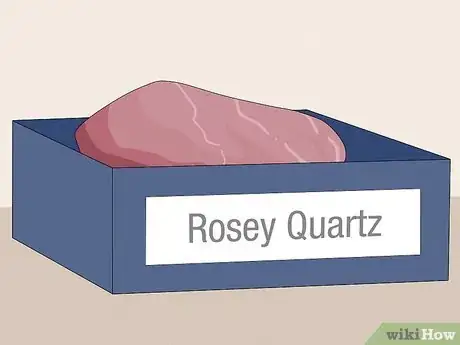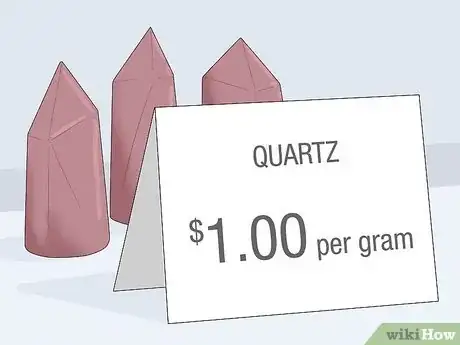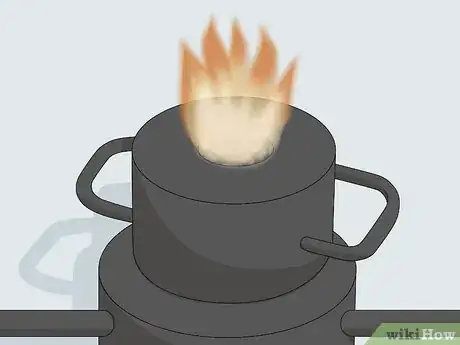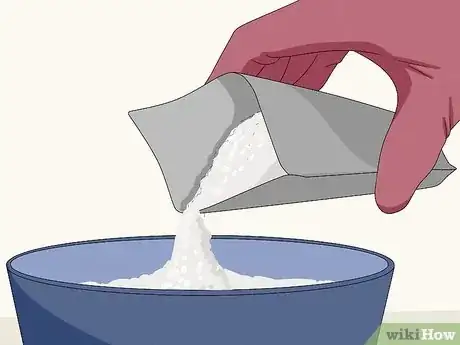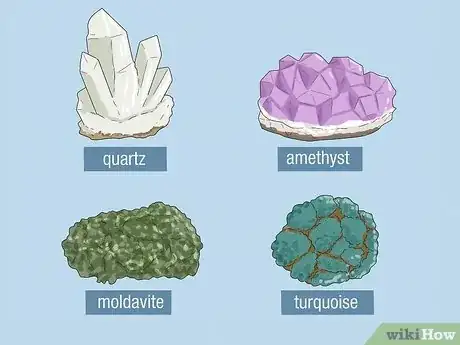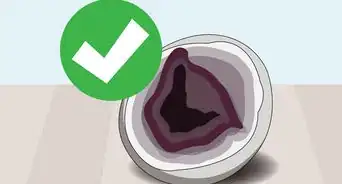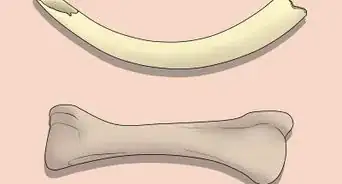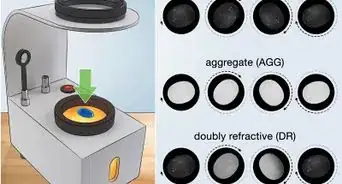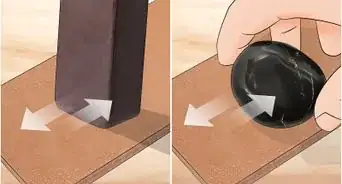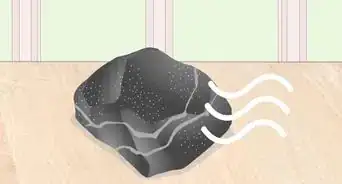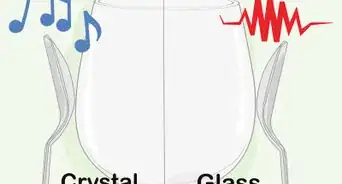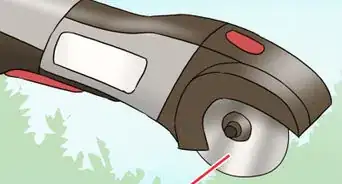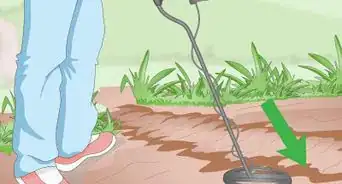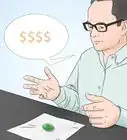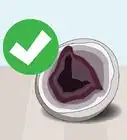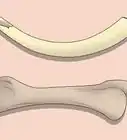This article was co-authored by Sam Lagor, MSc and by wikiHow staff writer, Dan Hickey. Sam Lagor is a Geologist with over eight years of experience. He specializes in engineering geology (dams, bridges, and tunnels) and mineral exploration (gold, lead/zinc, andindustrial minerals). Sam holds a BS in Geology from St. Lawrence University and an MS in Geology from The University of Vermont. He is also a member of the Geological Society of America and the American Institute of Professional Geologists.
There are 8 references cited in this article, which can be found at the bottom of the page.
wikiHow marks an article as reader-approved once it receives enough positive feedback. In this case, 95% of readers who voted found the article helpful, earning it our reader-approved status.
This article has been viewed 82,610 times.
You sense that a crystal in your collection isn’t working very well and you suspect it might be fake, but how can you tell? There are a lot of signs to look for, from the crystal shop itself to the way it feels in your hand, to determine whether a crystal is legit or not. That’s why we’ve put together a handy guide to identifying fake crystals, plus what it’s like working with heat-treated and synthetic varieties. If you’re ready to put your collection to the test, keep scrolling!
Things You Should Know
- Watch out for unknowledgeable sellers, too-good-to-be-true prices, and crystals that look too bright, glassy, clear, and perfect.
- Real natural crystals are cool to the touch, don’t scratch easily, contain imperfections, and are usually heavier than fakes.
- Heat-treated and synthetic crystals are not considered 100% fake and can still be used for healing, meditation, or manifesting.
Steps
Signs a Crystal Is Fake
-
1The crystal feels suspiciously light when you hold it. Natural crystals contain metals and other inclusions from their formation in the earth that weigh them down, whereas fakes might be mostly glass. In some cases, a real crystal might weigh the same as a fake that’s twice the size.[1]
-
2The crystal feels too warm to the touch. Real crystals don’t retain heat for very long and should feel cold to the touch. Pick one up and gauge its temperature—if it’s real, it’ll feel colder than your hand and probably colder than the ambient room temperature, too. If it’s warm or feels like room temperature, then it’s probably not the real deal.[2]Advertisement
-
3The crystal’s color is super bright compared to other stones. Many real crystals are bright too, but they’ll look translucent or a little muted compared to dyed fakes. If a gem looks exceedingly bright or saturated (think highlighter yellows or neon pinks), there’s a good chance it was dyed to look more attractive.[3]
- Look at the little fractures and crevices on the crystal's surface. If you see darker colors there, it means dye pigment has accumulated in the cracks.
-
4The crystal has tiny air bubbles inside of it. When a real crystal is formed naturally in the earth, it might show cracks, scratches, or small particles inside of it, but never bubbles. Air bubbles are an immediate sign that the stone is probably glass that was cut to look like a crystal.[4]
- The bubbles might not be noticeable right away—hold the crystal up to your eye or use a magnifying glass to look deep inside.
-
5The crystal looks too clear, perfect, or glass-like. Very few natural crystals have perfect clarity, especially colored gems like emeralds or topaz—that’s why it’s such an expensive and prized quality.[5] Instead, most real crystals have crisscrossing fractures or hydrothermal veins inside or attached to its walls. Look out for these inclusions while you shop (even if you’re looking at pictures online). If they’re absent, the “crystal” is likely glass.[6]
- Glass imposters will have super sharp, clear angles and look highly polished (natural crystals are rarely cut as precisely as glass).
- Hold your suspicious crystal up to some writing. Real crystals will distort the letters in many directions, but glass will just magnify them.[7]
- Compare the price of the crystal to its clarity. If you see a large, perfect emerald that isn’t thousands of dollars, for example, then chances are it’s synthetic.[8]
-
6The crystal shatters or gets scratched easily. Many (but not all) of the most common healing crystals are fairly hard—at least a 6 on the Mohs hardness scale. They’re pretty resistant to damage when they’re dropped or scratched. Glass is only a 5.5 on the Mohs scale.[9] If you think a crystal is fake, look up its supposed hardness and test it by trying to scratch a glass sheet with it—if it’s genuine and the right hardness, it should leave a mark.
- This test won’t work for soft crystals like selenite or fluorite, which are below 5 on the Mohs scale.
- Alternatively, try the drop test. Hard crystals like quartz (a 7 on the Mohs scale) will not break, but glass will shatter or partially break inside its walls.[10]
-
7The crystal smokes, smells, or melts when it’s exposed to a flame. If you suspect you’re working with a fake, hold your crystal over a lighter for 10 to 20 seconds. If there’s any plastic, it’ll start to melt or morph. Real crystals change with heat too, but not at the relatively low temperature of a lighter.[11]
- This trick is great for exposing plastic, but won’t work if your crystal contains glass.
- Do this test at home on crystals you already own (most shopkeepers won’t appreciate torching their products in the store!).
- Plastic crystals will also feel lighter than real ones and scratch more easily.
-
8The crystal has an eccentric, silly, or fruity name. Some genuine crystals do have enticing names, but many that sound too “fun” or descriptive are typically a marketing device for fake stones. A fake rose quartz might be a piece of colored glass marketed as Rosey Quartz, for example, or strawberry quartz (which is real but rare) might be a fake that’s dyed to be extra bright-colored.[12]
- If a name strikes you as odd and the crystal looks suspiciously clear, sparkly, and perfect, then it's most likely an imposter.
-
9The price seems too low for a quality crystal. If you spot a deal for a crystal that seems too good to be true, then it probably is (especially online). Look for your desired crystal at multiple retailers to get a sense of the standard price range, size, and quality. A low price doesn’t always mean it’s a fake, but be prepared to look for other clues to reveal its authenticity.[13]
-
10The retailer doesn’t seem to know much about their crystals. Crystal shoppers have questions that a reputable seller could answer easily and in detail. If you walk into a shop and the seller only gives vague, unhelpful answers, it could be a sign they’re not selling genuine crystals.[14] If you’re buying online, read customer reviews to get a sense of the retailer’s reputation. Fake products are a big red flag!
- Look at the number of rare crystals the shop has. If there’s a massive stock of an uncommon stone, chances are that at least some of them are imposters.
- Real crystals have an energy you can sense. Trust your intuition if you feel like the shop isn’t supplying genuine crystals.
Expert Q&A
-
QuestionHow can you check the purity of blue sapphire?
 Kennon YoungKennon Young is a Master Gemologist Appraiser and the Owner of Vermont Gemological Laboratory in Burlington, Vermont. With over 20 years of experience in the industry, Kennon and his team specialize in handmade engagement rings, wedding bands, and custom jewelry. He attended the Revere Academy of Jewelry Arts, the Gemological Institute of America, and the Rhode Island School of Design Extension. He is a Jewelers of America (JA) Certified Bench Jeweler Technician and received the highest credential in the jewelry appraisal industry, the ASA Master Gemologist Appraiser, in 2016.
Kennon YoungKennon Young is a Master Gemologist Appraiser and the Owner of Vermont Gemological Laboratory in Burlington, Vermont. With over 20 years of experience in the industry, Kennon and his team specialize in handmade engagement rings, wedding bands, and custom jewelry. He attended the Revere Academy of Jewelry Arts, the Gemological Institute of America, and the Rhode Island School of Design Extension. He is a Jewelers of America (JA) Certified Bench Jeweler Technician and received the highest credential in the jewelry appraisal industry, the ASA Master Gemologist Appraiser, in 2016.
Master Gemologist Appraiser It's best to take it to a gemologist who can test its purity with gemological instruments like refractometers. Search for a local gemologist online, or check with an organization like the American Gemological Association—they list all of their gemologists on their website.
It's best to take it to a gemologist who can test its purity with gemological instruments like refractometers. Search for a local gemologist online, or check with an organization like the American Gemological Association—they list all of their gemologists on their website.
References
- ↑ https://thezenuniverse.org/know-healing-crystals-legit-fake/
- ↑ https://thezenuniverse.org/know-healing-crystals-legit-fake/
- ↑ https://thezenuniverse.org/know-healing-crystals-legit-fake/
- ↑ https://thezenuniverse.org/know-healing-crystals-legit-fake/
- ↑ https://www.rockseeker.com/synthetic-gemstones/
- ↑ https://www.neocrystals.com/how-to-tell-if-clear-quartz-is-real-or-fake
- ↑ https://thezenuniverse.org/know-healing-crystals-legit-fake/
- ↑ https://www.rockseeker.com/synthetic-gemstones/
- ↑ https://www.nps.gov/articles/mohs-hardness-scale.htm
- ↑ https://www.neocrystals.com/how-to-tell-if-clear-quartz-is-real-or-fake
- ↑ https://yesdirt.com/how-to-tell-if-a-crystal-is-real-with-a-lighter/
- ↑ https://thezenuniverse.org/know-healing-crystals-legit-fake/
- ↑ http://askingangels.com/healing/crystals/fake-stones.php
- ↑ https://thezenuniverse.org/know-healing-crystals-legit-fake/
- ↑ https://www.gemsociety.org/article/gemstone-treatment-and-enhancement/
- ↑ https://happysoulonline.com/blogs/news/the-energy-of-fake-crystals
- ↑ https://happysoulonline.com/blogs/news/the-energy-of-fake-crystals
- ↑ https://www.rockseeker.com/synthetic-gemstones/
- ↑ http://askingangels.com/healing/crystals/fake-stones.php
- ↑ http://askingangels.com/healing/crystals/fake-stones.php
